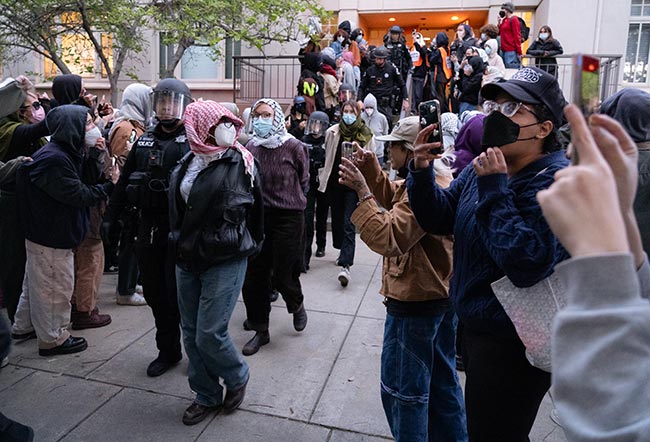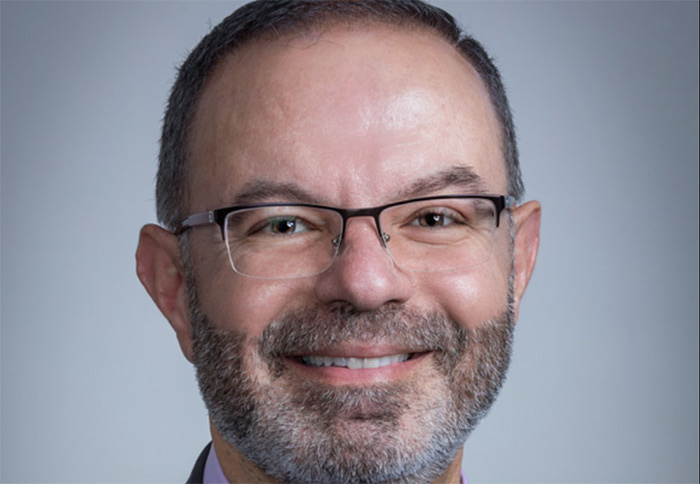Colleges put Claremont in the spotlight
It’s undeniable: Over the past 100 years some of the world’s brightest lights have performed or lectured here, and the Claremont Colleges have been and continue to be at the heart of this small town’s outsized drawing power.
A look through the Colleges’ archives reveals a stunning who’s who of 20th and 21st Century artists, thinkers, writers, politicians and entertainers. A short (!) list includes such diverse names as Amelia Earhart, Winston Churchill, Eleanor Roosevelt, Carl Sandburg, Martha Graham, Duke Ellington, Jascha Heifetz, Richard Nixon, Ella Fitzgerald, Marcel Marceau, Itzhak Perlman, Ray Charles, The Supremes, The Byrds, Ralph Nader, Andres Segovia, Frank Zappa, The Carpenters, Kris Kristofferson, Steve Martin, Bette Davis, Count Basie, Mel Torme, Sarah Vaughan, the Dalia Lama, Cab Calloway, Johnny Cash, Harry Belafonte, Bob Fosse, Rick Nelson, Vincent Price, Elie Weisel, Coretta Scott King, William F. Buckley, Jr., Cary Grant, Lucille Ball, Kurt Vonnegut, Garrison Keillor, Carol Burnett, Mel Tormé, George Carlin, John Irving, Jesse Jackson, Ray Bradbury, Diane Feinstein, Wynton Marsalis, The Peking Acrobats, Victor Borge, Dionne Warwick, Hillary Rodham Clinton, Maya Angelou, Morrissey, John Cleese, Beck, George Clinton, Michael Moore, Bishop Desmond Tutu, Walter Cronkite, Willie Nelson, David Sedaris, Bono, Janet Reno, Condoleezza Rice, Mitt Rom
So how does a smallish-town lure such world-class talent? Quite simply, it’s the Colleges.
Yes, we’re a college town, with about 35,000 residents, but we’re no Cambridge, MA (pop. 110,651), or Berkeley (pop. 121,240). For Claremont’s diminutive size, we have a decidedly enlarged footprint.
And of all the venues on the seven major campuses around town, Pomona College’s still spectacular Bridges Auditorium stands head and shoulders above them all. “Big Bridges” opened its doors in 1932. At the time, it was among the most prestigious venues in Southern California, with a capacity 2,581 and boasting excellent acoustics for its day. On opening night, the Los Angeles Philharmonic Orchestra performed. The LA Phil returned many times over the coming decades, a regular association that would last until the orchestra got a permanent home in 1964 with opening of Los Angeles’ Dorothy Chandler Pavilion.
“There was no really good place to perform in Los Angeles,” said Graydon Beeks about the 32 years between Bridges and the Dorothy Chandler opening. Mr. Beeks is uniquely qualified to speak on the history of music at the Claremont Colleges; For the past 33 years he has been the director of music programming and facilities at Bridges Hall of Music, aka “Little Bridges,” located just southwest of Big Bridges, which opened in 1915, predating Big Bridges by 17 years. He is also a music professor at Pomona College. “[Touring musicians] were performing in the Shrine Auditorium, and there was certainly nothing in Orange County,” he said. Los Angeles’ Shrine, which opened in 1926 with a capacity of 6,442, was larger, but the venue’s arguably poor acoustics were a drawback.
Additionally, in the days prior to the freeway system, getting into Los Angeles was a much more difficult proposition, Mr. Beeks said. “So, something like Bridges Auditorium was a big draw for this end of LA County,” he added. “That was one of the reasons it could attract [the great violinist Jascha] Heifetz and the like to perform.”
The opening of the Dorothy Chandler Pavilion “really changed the game,” Mr. Beeks said. The acoustics at Chandler, while not ideal, were certainly better than those at the Shrine and at Bridges. Economics also played a part, he added, noting that artist’s fees also rose sharply in the 1960s.
Asked what’s changed at Little Bridges over his long tenure, Mr. Beeks was surprisingly direct. “Not a lot. We don’t have the money typically to bring in big name performers, so we’re working on a slightly lower level than [Big Bridges],” he said.
That wasn’t always the case. Bridges Hall of Music was the destination of choice for visiting artists in the early part of the 20th Century. The 550-seat Mediterranean and Spanish-influenced masterpiece was designed by architect Myron Hunt (who is also is responsible for such Southern California landmarks as The Huntington Library, the Pasadena Public Library and the Rose Bowl). After the new pipe organ was installed in the fall of 1915, Bridges Hall of Music hosted such big names at the time as organist Edwin Lemare, soprano Florence Hinkle and the Kneisell String Quartet. Major artists continued to visit throughout the 1920s, including violinist Efrem Zimbalist, French organist and composer Marcel Dupre, contralto Louise Homer and African-American tenor Roland Hayes.
The Bridges aren’t the only venues on campus. Several others are also major draws for talent. The Marian Miner Cook Athenaeum, or “The Ath,” as it’s known, has hosted countless authors, intellectuals, academics, philosophers, politicians, thought leaders and innovators to the Claremont McKenna College campus since opening in 1983. Today it continues with its stimulating, thought-provoking and challenging booking policy. Other venues include Garrison Theater and Edmunds Ballroom.
Coming up at Little Bridges in November is pianist Boris Berman, who is on the faculty at Yale School of Music. Mr. Berman will play Bela Bartok’s Piano Concerto No.3 with the Pomona College Orchestra under the direction of Professor Eric Lindholm.
Big Bridges promises a wide-ranging slate of bookings as well, but Ms. Kuhn said it’s too early to announce anything, as contracts are still being signed.
The Athenaeum in 2017-18 will host award-winning writer Leslie Jamison, University of Chicago economist Steven Kaplan, South Sudanese human rights and education activist Valentino Deng, Harvard physicist Lisa Randall, and AI/Watson expert Jay Bellissimo, among others.
Most of the events on the Claremont Colleges campuses are free and open to the public. To get a look at the full schedule, go to collegescalendar.org.
—Mick Rhodes
mickrhodes@claremont-courier.com








0 Comments